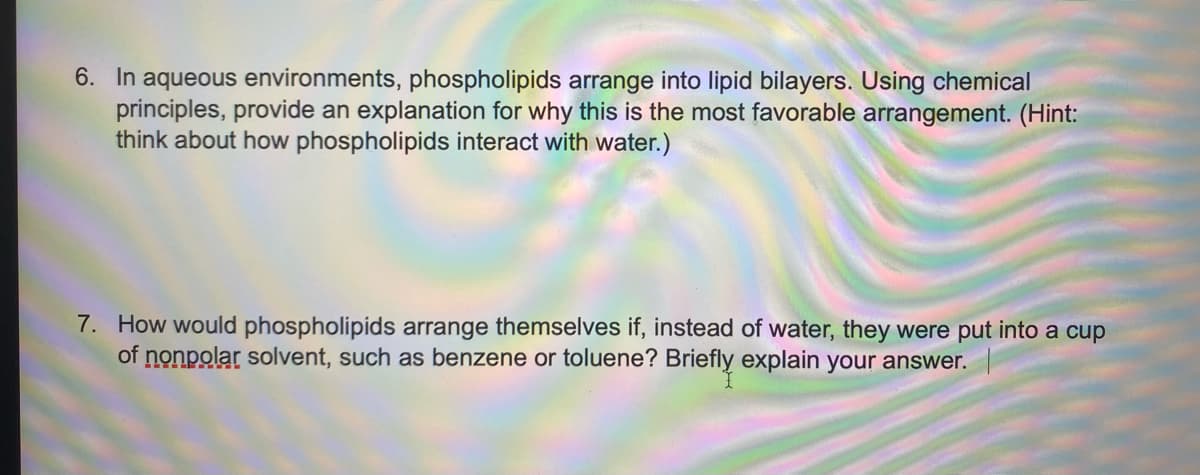6. In aqueous environments, phospholipids arrange into lipid bilayers. Using chemical principles, provide an explanation for why this is the most favorable arrangement. (Hint: think about how phospholipids interact with water.) 7. How would phospholipids arrange themselves if, instead of water, they were put into a cup of nonpolar solvent, such as benzene or toluene? Briefly explain your answer.

Introduction:
A lipid bilayer is a two-layer structure composed of phospholipids that forms the basic building block of cell membranes. The lipid bilayer is a semi-permeable membrane that separates the interior of a cell from its environment.
Each phospholipid molecule consists of a hydrophobic (water-fearing) fatty acid tail and a hydrophilic (water-loving) phosphate head. In a lipid bilayer, the hydrophobic tails face each other and the hydrophilic heads face the exterior and interior of the cell. This arrangement creates a barrier that prevents water-soluble substances from freely crossing the membrane, while allowing for the exchange of ions and other water-soluble molecules.The lipid bilayer is a dynamic structure that can undergo changes in response to various stimuli, such as changes in temperature or the presence of specific signaling molecules. This allows cells to respond to their environment and maintain homeostasis.
Trending now
This is a popular solution!
Step by step
Solved in 2 steps









